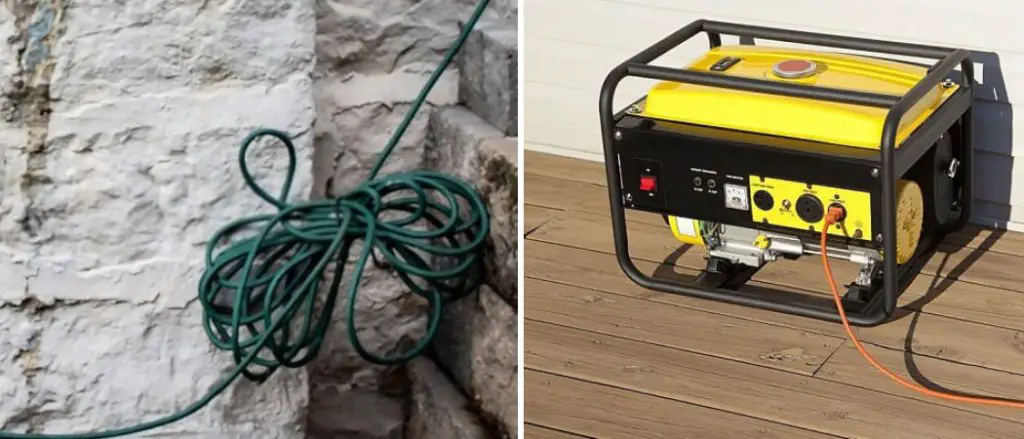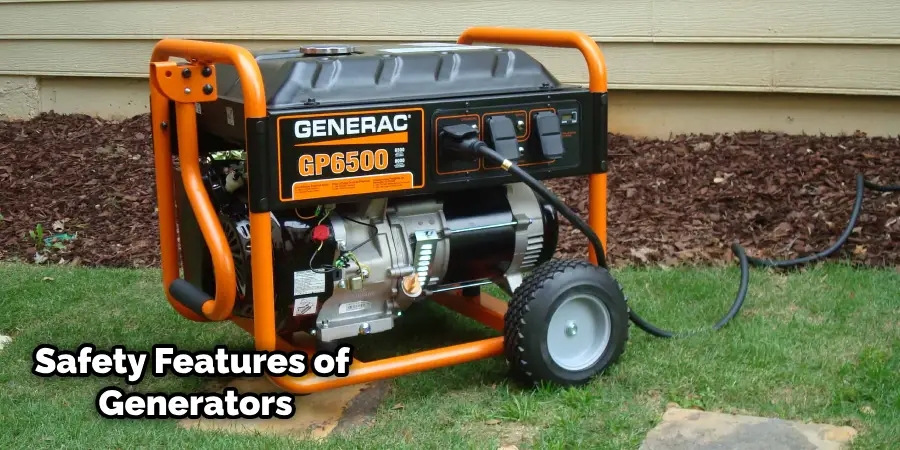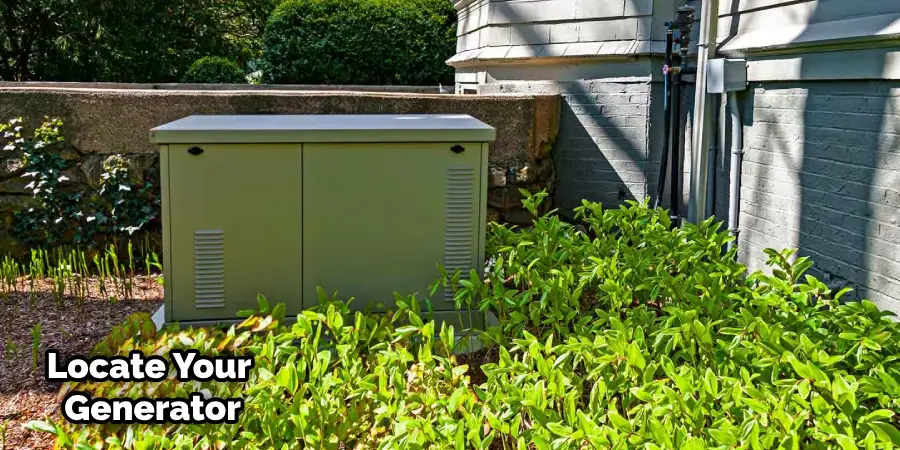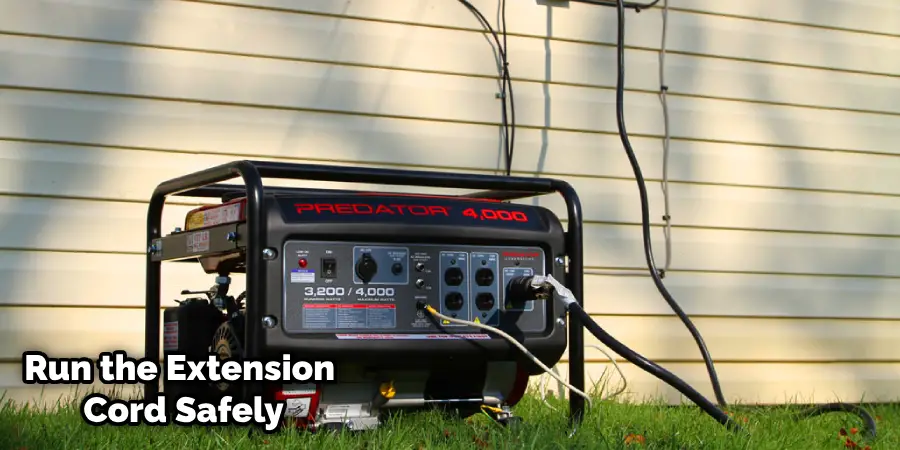Are you in the market for a new generator but don’t know how to run an extension cord from the generator into your house? Look no further! Whether you’re looking to power crucial household appliances while camping or preparing for potential emergencies, knowing how to safely and effectively run an extension cord from your generator to your house is essential.

In this blog post, we’ll provide comprehensive and easy-to-follow instructions on everything you need to know about running an extension cord from a generator so that everyone can be better prepared with these key skills. So let’s get started and learn some tips on how to run extension cord from generator into house saving yourself time, energy (in more ways than one!), and money!
Understanding Your Generator
Before you even uncoil your extension cord, it’s crucial to understand the basics of your generator.
1. Types of Generators and Their Capacities
Generators come in a variety of types, each with its own unique capabilities. For instance, portable generators are popular due to their flexibility and are usually capable of producing between 3000 and 8500 watts of power. Standby generators, on the other hand, can provide a much higher power output, between 5000 and 20000 watts. Understanding the capacity of your generator is crucial in determining which appliances and devices it can support.
2. Power Requirements of Essential Appliances and Devices
Household appliances vary significantly in their power requirements. A refrigerator, for example, might require anywhere between 100-800 watts, depending on its size and model. Other devices, like a laptop, only require between 20-50 watts. It’s important to list out the devices you plan to power simultaneously and calculate the total wattage requirement to ensure your generator can handle the load.
3. Safety Features of Generators

Generators are equipped with a variety of safety features designed to protect both the user and the generator itself. These features often include circuit breakers to prevent overload, low-oil shutdown to protect the engine, and grounding methods to prevent electrical shock. Always ensure that these safety features are fully functional before operating your generator.
Selecting the Right Extension Cord
Using the wrong extension cord can result in serious damage to both your generator and appliances. It’s crucial to select the right type of extension cord with the proper capacity for your specific needs.
1. Gauge and Length
The gauge of an extension cord refers to its thickness, which determines its maximum amperage capacity. The lower the gauge number, the thicker the cord and the higher the capacity. For example, a 10-gauge extension cord can handle up to 15 amps, while a 12-gauge can only handle up to 10 amps. Additionally, longer cords tend to lose more power due to resistance, so it’s essential to choose an appropriate length for your needs.
2. Outdoor vs Indoor Use
It’s crucial to select an extension cord specifically designed for outdoor use when running it from your generator into your house. Outdoor cords are built to withstand harsher weather conditions and have additional safety features such as water-resistant coatings.
How to Run Extension Cord from Generator Into House: 8 Step-By-Step Guides
Step 1: Locate Your Generator

Before anything else, make sure you have your generator in an open and well-ventilated area. Position it away from any flammable materials and ensure there is enough space for the extension cord to reach your house without creating a tripping hazard.
Step 2: Measure the Distance
Use a tape measure to determine the exact distance between your generator and the nearest outlet in your house. This measurement will help you determine the length of the extension cord you need.
Step 3: Select and Prepare Your Extension Cord
Based on your generator’s capacity and appliance requirements, please select an appropriate extension cord and make sure it is free from any tangles or knots before use.
Step 4: Connect the Extension Cord to Your Generator
Carefully plug one end of the extension cord into the appropriate outlet on your generator. Ensure that it is securely connected to avoid any power interruptions.
Step 5: Run the Extension Cord Safely

Make sure that your extension cord is secured and out of reach from children or pets. Avoid running it across high-traffic areas or under carpets to prevent tripping hazards. If possible, secure it to the ground using stakes or clips.
Step 6: Plug Your Appliances and Devices into the Extension Cord
Once your extension cord is safely secured and in place, plug in your appliances and devices according to their specific power requirements. Make sure not to exceed the total wattage capacity of your generator.
Step 7: Power on Your Generator and Test the Connections
After everything is connected, please turn on your generator and test each appliance to ensure that they are receiving power. If any appliances do not turn on or appear to be malfunctioning, immediately turn off your generator and double-check all connections.
Step 8: Monitor Your Generator and Extension Cord During Use
While using your generator, regularly monitor both the generator and extension cord for any signs of damage or overheating. If you notice anything out of the ordinary, immediately turn off your generator and disconnect all appliances.
Safety Tips When Running an Extension Cord from a Generator into Your House
1. Avoid Overloading Your Generator
Always calculate the total wattage requirements of your appliances before plugging them into your generator. Placing a higher load on your generator than it can handle can cause damage to both the generator and connected devices.
2. Never Operate Your Generator Indoors
Generators emit carbon monoxide, a deadly gas that is odorless and colorless. Always operate your generator outdoors in a well-ventilated area to prevent carbon monoxide poisoning.
3. Keep Extension Cords Dry and Protected
To avoid electrical shock or fire hazards, keep your extension cords protected from moisture and wet conditions at all times.
4. Regularly Check Your Generator’s Maintenance Requirements
Follow the recommended maintenance schedule for your generator to ensure it is always functioning properly and safely.
5. Use Ground Fault Circuit Interrupters (GFCI)
Consider using a GFCI extension cord, which will automatically shut off the power if there is an electrical fault or short circuit.
Maintenance and Storage of Your Extension Cord and Generator
Maintenance
To ensure the longevity and efficiency of your extension cord and generator, regular maintenance is crucial. Keep both clean and free from any debris that could cause damage or clog air filters in the case of generators.
Storage
When not in use, store your extension cord and generator in a cool, dry place to prevent any potential damage due to weather exposure. It’s also essential to properly coil and store your extension cord to avoid any tangles or damage. Regularly check on both the cord and generator to ensure there are no signs of wear and tear.
Troubleshooting Common Issues
1. Addressing Potential Problems with the Extension Cord
If your appliances aren’t receiving power from the generator, the issue may be with the extension cord. Check for any visible signs of damage, such as burns, cuts, or fraying. The cord may also be tangled or knotted, which can impede the flow of electricity. If the cord is damaged, replace it immediately. If it’s tangled, carefully unravel the cord and try again. Also, ensure that the cord is of the right gauge and length for the power you need.
2. Troubleshooting Generator Issues
If the generator isn’t supplying power, check the fuel level and ensure the generator is turned on. Also, check the circuit breakers on the generator; they may have tripped due to an overload. If the generator still doesn’t work, check the spark plug and air filter for damage or blockages. Always refer to your generator’s user manual for more specific troubleshooting steps.
3. Knowing When to Seek Professional Help
If you’ve tried basic troubleshooting and your generator still isn’t functioning correctly, it’s time to seek professional help. Persistent issues could indicate a serious problem that requires a professional’s expertise. Also, if you’re not comfortable performing certain maintenance tasks like replacing the spark plug or cleaning the air filter, it’s safer to hire a professional. Remember, when dealing with power equipment like generators, safety should always be your top priority.
Tips for Using Multiple Extension Cords
1. Use a Surge Protector
To protect your appliances and devices from power surges, use a surge protector at the end of your extension cord before plugging in any electronics.
2. Avoid Daisy-Chaining
Daisy-chaining refers to connecting multiple extension cords together, which can cause power loss and increase the risk of overloading your generator. Instead, use a single extension cord with the appropriate length for your needs.
3. Keep Cords Away from Water
Water and electricity do not mix, so make sure to keep your extension cords away from any water sources or areas prone to moisture.
4. Label Your Cords
To avoid confusion and potential power overload, label each of your extension cords with the appliances and devices it is meant to power. This will help you keep track of the total wattage being used and prevent any accidents.
Conclusion
Operating a generator and using extension cords to power your home appliances during a power outage can be a lifesaver. However, it is essential to put safety first, from the point of setting up your generator to the maintenance and storage of your equipment. Observing all the mentioned guidelines, such as avoiding overloading, keeping your generator outdoors, and checking for maintenance needs, will ensure a hassle-free experience.
Remember, when in doubt or faced with persistent issues, seeking professional help is the best course of action. With the right knowledge and a bit of caution, you can confidently and safely leverage your generator’s power in times of need. Thanks for reading this article about how to run extension cord from generator into house.

